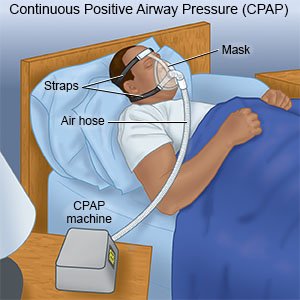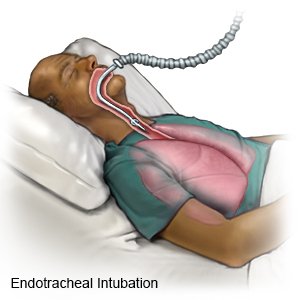Laryngospasm
Medically reviewed by Drugs.com. Last updated on Apr 6, 2025.
What is laryngospasm?
Laryngospasm is the tightening of the muscles that surround your vocal cords (larynx). This prevents air from getting into your lungs. Laryngospasm usually only lasts a few seconds and gets better on its own. Laryngospasm that does not improve on its own is a life-threatening emergency.
What causes laryngospasm?
The cause of laryngospasm may not be known. Tubes or instruments placed in your airway during surgery may cause laryngospasm. Laryngospasm may also happen when tubes are removed from your airway or stomach after surgery. The following may increase your risk for laryngospasm:
- Surgery in your airway
- Acid reflux
- A history of asthma or COPD
- Active or recent upper respiratory infection
- A history of exposure to secondhand smoke
- Some types of anesthesia medicine
What are the signs and symptoms of laryngospasm?
- Sudden trouble breathing or speaking
- Noisy or raspy breathing
- Trouble swallowing
- Pale or bluish skin, lips, fingernails, or toenails
- Pulling in of the skin between the ribs and around the neck with each breath
How is laryngospasm treated?
Your healthcare provider may treat conditions that increase your risk for laryngospasm, such as acid reflux. A speech therapist may teach you breathing exercises to help prevent laryngospasm. A laryngospasm that becomes life-threatening may be treated with any of the following:
- Medicines may be given help relax the muscles around your airway so it will open.
- Continuous positive airway pressure (CPAP) helps open your airway. A mask is placed over your nose and mouth, or just your nose. The mask is hooked to a CPAP machine. The CPAP blows a gentle stream of air into the mask when you breathe. This helps keep your airway open so you can breathe more regularly. Extra oxygen may be given through the machine.

- A ventilator is a machine that gives you oxygen and breathes for you when you cannot breathe well on your own. An endotracheal (ETT) is put into your mouth or nose and attached to the ventilator. You may need a trach if an ETT cannot be placed. A trach is a tube put through an incision and into your windpipe.

Have someone call your local emergency number (911 in the US) for any of the following:
- You suddenly have trouble breathing or speaking.
- You stop breathing.
- Your breathing is noisy or raspy.
- Your lips or skin are blue or purple.
- Your skin between the ribs and around the neck pulls in with each breath.
- You lose consciousness.
When should I call my doctor?
- You have questions or concerns about your condition or care.
Care Agreement
You have the right to help plan your care. Learn about your health condition and how it may be treated. Discuss treatment options with your healthcare providers to decide what care you want to receive. You always have the right to refuse treatment. The above information is an educational aid only. It is not intended as medical advice for individual conditions or treatments. Talk to your doctor, nurse or pharmacist before following any medical regimen to see if it is safe and effective for you.© Copyright Merative 2025 Information is for End User's use only and may not be sold, redistributed or otherwise used for commercial purposes.
Further information
Always consult your healthcare provider to ensure the information displayed on this page applies to your personal circumstances.
